Cabinet glass inserts are a stylish way to give a bright and open look to your kitchen. Inserts can be made from traditional leaded glass, etched glass, or textured art glass and can easily be retro-fitted into your existing cabinet doors.
As a general rule, cabinet glass inserts do not need to be tempered. Most cabinet glass is at eye level and out of harm’s way in a typical residential kitchen. Tempering is essential for glass installed at floor level or in commercial kitchens.
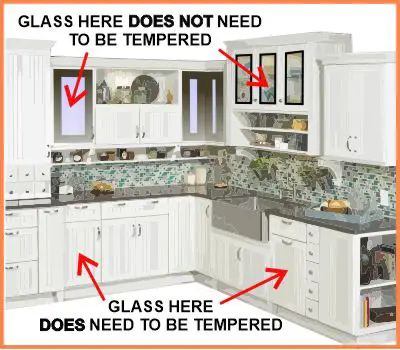
What Is The Difference Between Tempered And Annealed Glass?
The key feature of tempered (heat-strengthened) glass is that it is stronger (4 times the impact resistance of annealed glass) and is safer: it breaks into harmless “popcorn” fragments rather than dangerous shards. This is the reason that tempered glass is mandated by code for shower and patio doors and any situation where the public could come into dangerous contact with glass.
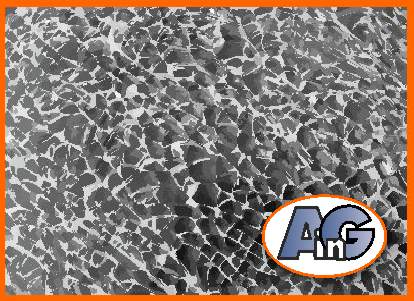
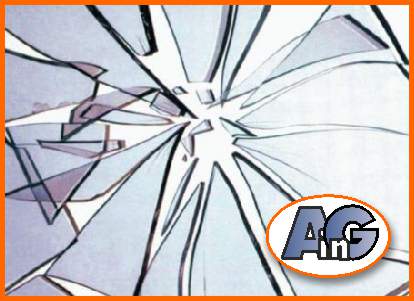
How Is Tempered Glass Made?
Annealed glass is passed, on rollers, through a tempering oven where it is heated to a temperature of 620 degrees C.
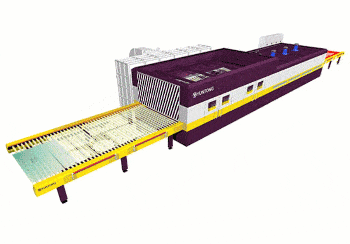
The hot glass is quickly quenched by high-pressure air from an array of nozzles. Quenching cools the outer surfaces of the glass much more quickly than the center and as the center of the glass gradually cools, it tries to pull back from the rigid outer surfaces. As a result, the center remains in tension, and the outer surfaces go into compression, giving tempered glass its strength. Follow this link for more details about tempering.
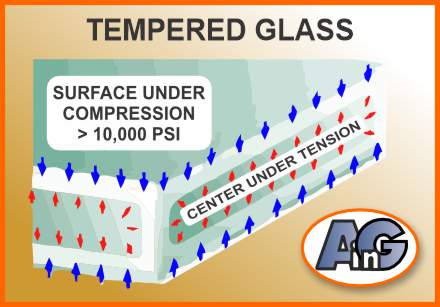
Now we understand the difference between tempered and annealed glass and we know that tempered glass is not required in most kitchen cabinets – what types of glass are typically used?
What Types Of Glass Are Used As Cabinet Inserts?
Numerous options are available for kitchen cabinet inserts and the choice depends on the décor of your kitchen and your personal preferences. The five main glass types are:
1) Clear or tinted architectural glass
2) Textured glass
3) Etched (sandblasted) glass
4) Overlay leaded glass
5) Stained or beveled art glass
1) Clear Or Tinted Architectural Glass
Many standard cabinets, such as those available in Home Depot or Lowes, come with regular clear glass. This is generally 1/8” float glass just like that used in windows. It can be tempered if you are very safety conscious and is available in subtle tints like bronze or gray and also in 3/16” panes for additional strength.

2) Textured Glass
Textured glass is a popular choice because the fabric of the glass lends a distinctive designer look to the cabinets. The other attraction is that, depending on the obscurity of the texture, the homeowner can choose between concealing or revealing the contents of their cabinets. Two categories of textured glass are:
a) Architectural Textured Glass
Architectural glass is available in various thicknesses (up to 3/8”) and comes in large sheets suitable for doors, windows, and screens. The important feature of architectural glass it is stronger than 1/8″ thick art glass and it can be tempered if necessary.

Architectural glass is popular with customers at Artistry in Glass in Tucson because of the textures available. Rain (or Niagra) glass is more common in shower enclosures but Reeded glass (center) gives a modern look for contemporary kitchens and Esto (right) is a hand-cast product that has a distinctive texture popular in Mission and Modern homes.
b) Textured Art Glass
Art glass (the glass used in small panels for stained glass windows and lampshades) is generally only 1/8” thick but is strong enough for kitchen cabinet inserts. Unlike architectural glass, it is only available in small sheets (generally about 24 * 48) and, importantly, cannot be tempered.
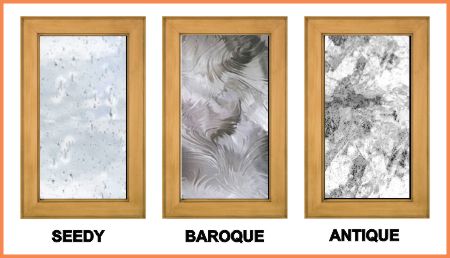
Many types of clear art glass are available: the most popular textures are Seedy (containing elongated bubbles or seeds), Baroque (with exuberant swirls), and Antique (with subtle lineaments simulating 18th Century hand-made glass). Numerous other textures are available for the discriminating designer like these examples available on Amazon.
3) Etched (Sandblasted) Glass
Etched (strictly speaking sandblasted) glass gives the customer total control over the design process at reasonable prices. Etching can be performed on tempered glass for the client who prefers extra strength. Customers can choose to reveal or obscure the cabinet contents by choosing between foreground or background etching.
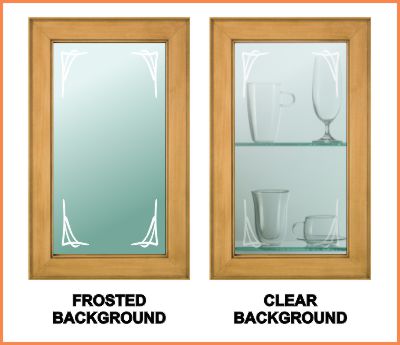
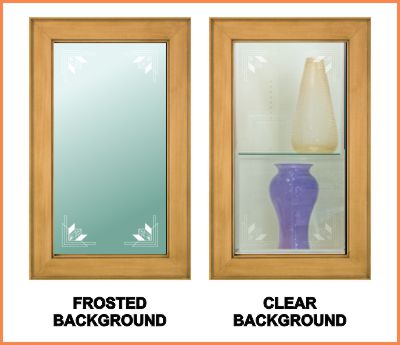
4) Overlay Leaded Glass
Overlay leaded glass is an economical option offered by some companies (including Artistry in Glass in Tucson) using the “overlay” process. Using a substrate of clear or textured glass, lead tape with adhesive backing is applied to both sides of the glass to closely simulate traditional leaded glass.
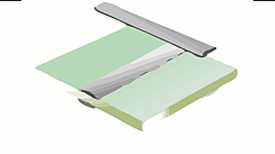
The benefits are the cost (overlay is less expensive) and strength (overlay can be applied to tempered glass).

Numerous styles of overlay leaded glass are available and note that the lead applied to textured as well as clear glass.
5) Stained Or Beveled Art Glass
Stained or beveled art glass represents the ultimate in luxurious upgrades for kitchen cabinets. Art glass is made by assembling separate pieces of glass in lead, zinc or brass came and cannot be tempered.
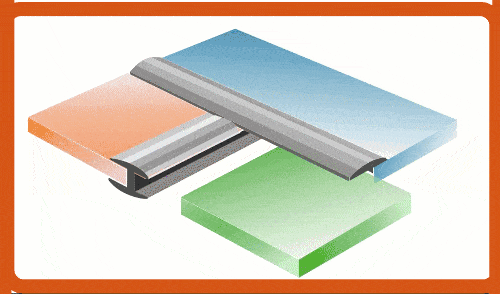
By far the most popular designs are simple beveled diamonds that recreate a traditional or Tuscan style kitchen. Other popular design influences are mission, country, and contemporary.
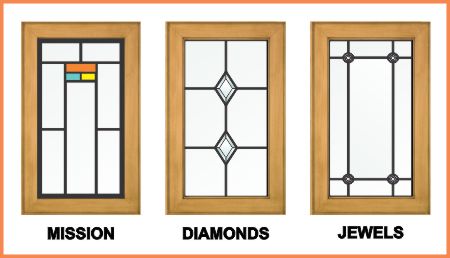
Design styles for art glass inserts can range from Traditional, Southwestern, Mission, Country, and Contemporary. Narrow down your design choices by consulting Tucson Cabinet Glass.
What Thickness Should Cabinet Glass Inserts Be?
Glass for residential applications comes in thicknesses ranging from 1/16″ (used for picture framing) to 3/4″ or even 1″ thick (used for heavy furniture.
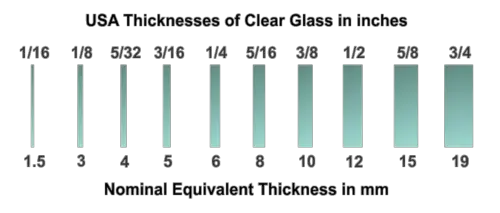
1/8″ is by far the commonest thickness for cabinet glass. Inserts can either be standard clear glass (sometimes called “double-strength”) or art glass in various textures. 1/8″ thick annealed (non-tempered) glass is perfectly safe for most situations but cabinet doors are strong enough to accept thicker glass if necessary.
Architectural textured glasses are available in 3/16″ thicknesses like Rain or Reeded and some, like the highly attractive Esto glass, are only made in 1/4″. All of these thicknesses can safely be installed in cabinet doors.
Finally, leaded stained or beveled art glass is usually framed in 1/4″ thick zinc came for strength. This webpage shows you the requirements for installing glass into cabinet doors.
Glass safety – learn from the experts!
- Choosing between tempered & laminated glass
- Broken glass injuries and how to avoid them
- Is wired glass safe?
- What is safety glass?
- What is tempered glass?
- What is Gorilla Glass?
- Plexiglass vs glass
- Should glass shelves be tempered?
- Should glass tabletops be tempered?
- Is lead crystal dangerous?
- Is leaded (stained) glass dangerous?
- How to repair cracked stained glass
Unique Mirror Resources from Artistry in Glass
Mirror Design & layout
- How are mirrors made?
- What is a beveled mirror?
- What is a two-way mirror?
- Best mirrors for bedrooms
- How to size and position your wall mirror
- How to order custom etched mirrors
- Best places to hang dining room mirrors
- How much do wall mirrors cost?
- Shop the MIRROR Family Package
Mirror Installation & Removal
- How to hang a wall mirror
- How to frame a builder’s grade bathroom mirror
- How to hang a frameless mirror with glue
- Best clips for hanging mirrors
- How to attach a mirror to a closet door
- How to remove a mirror glued to the wall
Mirror Repair & Restoration
- Should I resilver my antique mirror?
- Can I repair scratched mirror silvering?
- What is the best spray paint for mirror silvering?
- How to fix a cracked mirror
- How to repair a broken mirror frame
Artistry in Glass was your source for antique repair in Tucson
Check out this amazing selection of informative articles:-
- Where can I get antiques repaired?
- Are broken antiques worth fixing?
- How to fix a broken picture frame
- How to repair a broken china plate
- How to repair a broken china teapot
- How to fix a broken marble slab
- How to repair a broken china coffee mug
- How to repair a 2000-year-old sculpture
- All about repairing stained-glass lampshades
- How to care for your stained glass skylight
- How to repair Dalle de Verre
- Is stained glass worth repairing?
- To repair or toss out?
- Tucson crystal & china repair a division of Artistry in Glass
- What to do with broken antiques
- Is lead crystal dangerous?
- Repairing an antique Mexican statue
- Repairing religious statues
- The history of Swarovski crystal figurines
- How to find the value of a Swarovski Crystal figurine
- Have Swarovski crystal figurines lost value since 2009?
- How to collect Swarovski annual ornaments
- How to display Swarovski crystal figurines
- How to authenticate a Swarovski crystal figurine
- How to display Swarovski annual ornaments
- How to clean Swarovski crystal figurines
- How to repair a Swarovski crystal mouse
- How to repair a Swarovski annual ornament
- How to repair a Swarovski crystal train set
- Fixing broken wine glass stems
- How to clean cloudy glasses
- Why do wine glasses have stems?
- Swarovski Crystal Figurines
- How to repair a chip in a wine glass
- How to fix a scratched glass tabletop
- How to replace a broken patio tabletop
